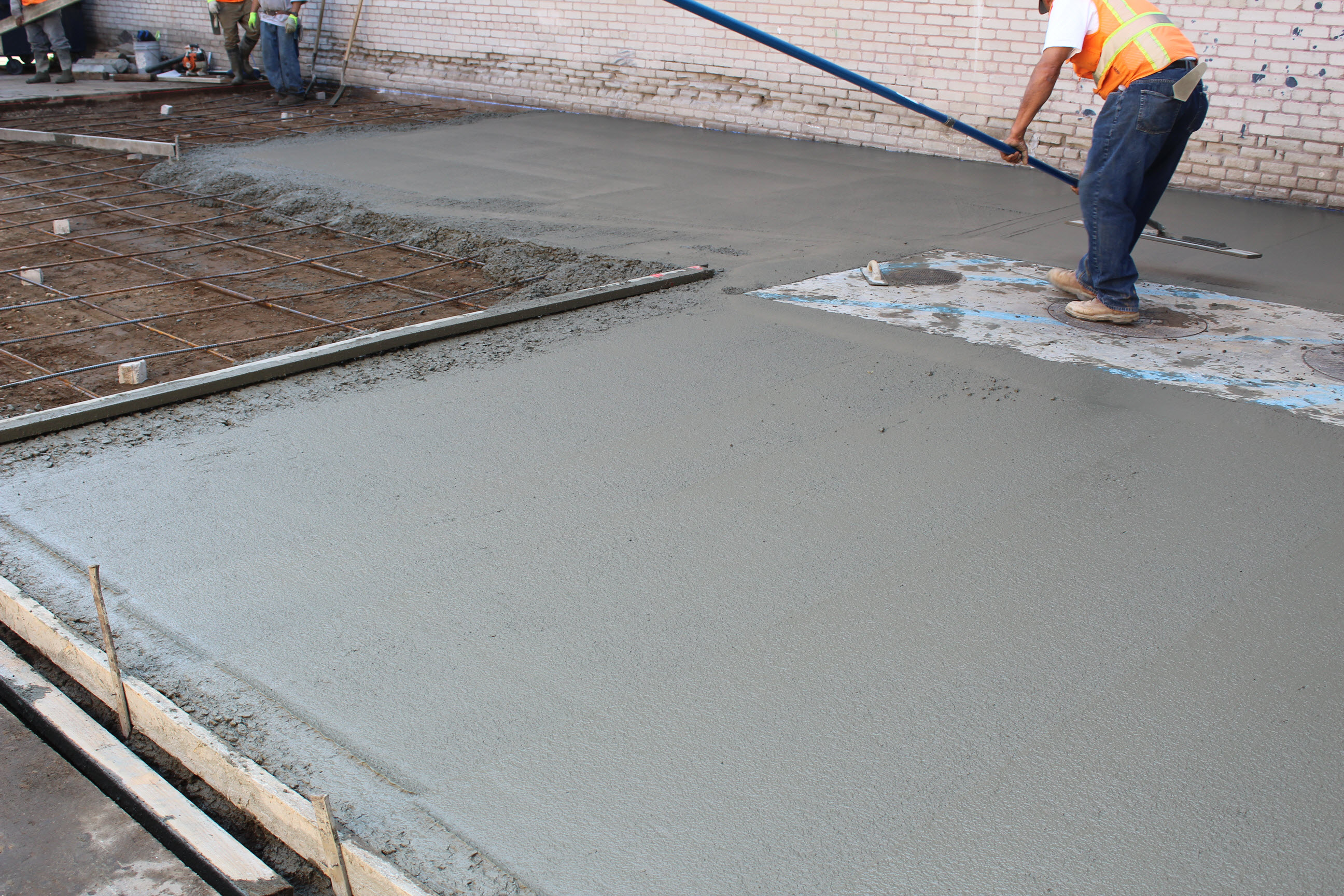How Long Should I Wait Before Driving on New Concrete?
Posted on April 10, 2020 by Rafael CantilloOne of the first things people want to know when they are having a new concrete driveway poured is how soon they will be able to drive on it. The time it takes for your concrete to be ready for use depends on a number of variables. The Empire team would like to go over what those variables are, give you some tips for speeding up the process, and, of course, give you an estimate as to when your new driveway will be ready for your vehicles.

Drying vs. Curing
These two terms are often used interchangeably, but they are actually two different processes. Concrete cures much faster than it dries. Thankfully, in the case of concrete that will be driven on, we are more interested in curing than drying. Some applications, however, such as the use of concrete as a subflooring, require it to dry to a certain level before work can continue. Let's take a closer look at the difference between curing and drying.
Cement starts off as a powder-like substance that is mixed with water. Concrete adds aggregate to that mixture to serve as a filler. It is the process of curing that turns the concrete into the hard, solid substance that we want it to be rather than a paste with rocks in it. Curing happens because mixing cement and water starts a chemical reaction. As the cement cures, some of the water mixed into it will be chemically transformed to become part of the new hard surface.
Only some of the water that is added to the cement undergoes this chemical reaction. The rest of the water must evaporate away. Concrete can be fully cured and still have moisture trapped inside that has yet to fully evaporate. The fact that it is the excess water that needs to dry is part of the reason why drying takes longer than curing does. Anything moisture-sensitive that will be placed on the concrete needs to have the remaining moisture be below a certain threshold.
When Is It Ready to Drive On?
Concrete is a top choice for driveways because once it is properly cured, it can last for up to 50 years. The key to getting nearly a half-century worth of use out of your concrete is being patient at first and letting it reach the hardness that it needs. You should keep everything off of the concrete for 48 hours. After that, you can walk on it.
Vehicles are heavy, so it stands to reason that it takes longer before you can drive on it than it does before you can walk on it. In fact, at this point, even skateboards and bicycles should be kept off as their wheels concentrate the weight into small areas and are more likely to damage the still curing concrete.
It is generally recommended that you wait at least a week before driving on the surface with a passenger vehicle. Even then, the slower curing areas, such as the edges, will not be as hard as they need to be. For this reason, you'll want to be careful until the concrete is fully cured. It should become fully cured at around the one month mark. After that, you can use it however you'd like.
Speeding Up the Process
Given the likelihood of damage, it stands to reason that you'll want your concrete to cure as fast as possible. There are some steps that can be taken to speed up the curing process, or at lease ensure that it isn't slowed. First, let's look at the variables that determine how fast concrete cures.
The Variables at Play
The variables that affect drying time are similar to those that affect curing time. Adding more water than is necessary for the chemical reaction to take place will lengthen the time it takes for the cement in your concrete to harden and fully dry. Air that is extra humid already contains a significant amount of water and will not pull the water out of the concrete as quickly as drier air, which will also extend the time it takes for your concrete to fully set. Finally, cold weather can lengthen the curing time as well.
Mixing a Faster Curing Cement Mix
We've already mentioned that adding too much water will lengthen the time it takes for your cement to cure and dry. It stands to reason that using less water in your mix will reduce the time it takes. Be aware though, that less water will make your concrete mixture inflexible and hard to work with. Getting the right amount of water to balance ease of use and faster drying times is essential. Warm, but not hot, water will accelerate the chemical reaction and help speed up the process as well.
In addition to adjusting the water, you may also be able to add calcium chloride to your cement. You have probably heard of quick-drying cement. Calcium chloride is the additive that causes it to dry quickly. The chemical speeds up the hydration of the cement so that both curing and drying happen faster. Of course, this option is not viable if you are already using quick-drying cement. Calcium chloride can be damaging to steel, so it should also be avoided anytime you are reinforcing your concrete with steel rebar.
After the Pour
For outside pours, such as concrete sidewalks, there is little you can do to control many of the variables that affect curing time. If you are pouring a concrete floor for a garage, you do have more options. Inside, dehumidifiers and heaters can help to maintain the ideal humidity and temperature for concrete to dry.
You can also use special concrete blankets that are designed to warm the concrete. These insulated blankets can help speed up the curing process, especially during cold or wet weather that would otherwise delay curing. Coverings of this type are especially important for concrete poured outdoors as they help to protect the fresh cement from the elements.
Conclusion
At Empire Parking Lot Services, we do more than just parking lots! Our experienced team is on hand ready to help you with your next big (or small) concrete project. If you need concrete work done, give us a call at 714-633-0300 or contact us through our website. Please check out our "Anatomy of a Parking Lot" blog for a more in-depth view of what makes up a parking lot.
Other Concrete Related Blogs:




Comments